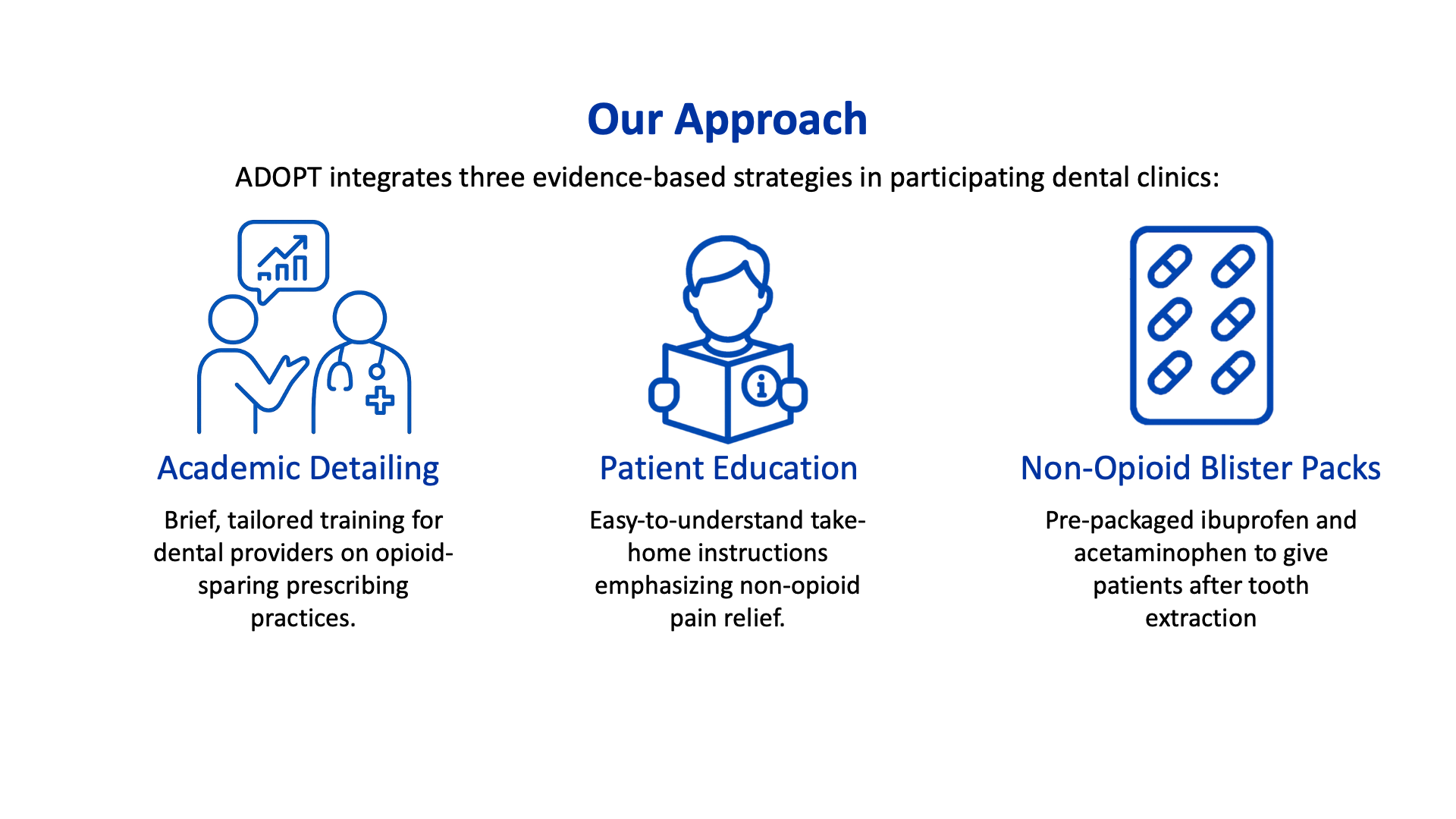Each year, U.S. dentists prescribe more opioids than in other countries. Many of these prescriptions—often given after tooth extractions in adolescents and young adults—go unused, creating opportunities for misuse or accidental exposure. Early exposure to opioids significantly increases the risk of long-term use or substance use disorder.
The ADOPT Study is testing a practical, multi-component approach to help dental providers and patients choose safe, effective, non-opioid pain management options.
Our goal: reduce opioid prescribing by at least 18% in participating clinics over four years while maintaining excellent pain control and patient satisfaction.
Learn more about the ADOPT study from our protocol paper.


